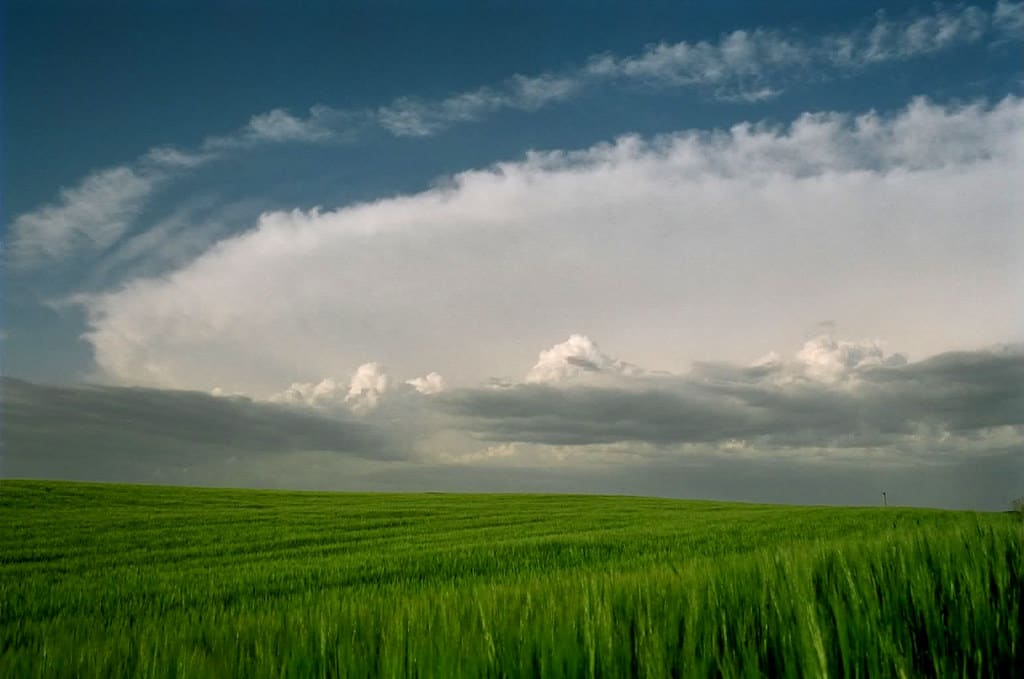Does more carbon dioxide mean better crop yields?
It's a tempting argument, but a false one

Here’s the deal – mankind is burning fossil fuels at such a rate that atmospheric carbon dioxide (CO²) is increasing to unprecedented levels (in historic times, that is). Plants need CO² to photosynthesise, and therefore to grow and produce more of the same. So surely the more CO² we humans produce, the better? Sorry – there are a few problems with this scenario!
Boosting growth
Yes – it is true that plant growth can be stimulated if more CO² is available. It has been shown that extra growth of up to one third can be produced in a CO² rich environment, and some plant growers have taken advantage of this fact in their production of crops grown under glass.
There is also an advantage to be gained when water is scarce. The pores in plant leaves allow CO² to be absorbed but pores are also responsible for water loss through evaporation. If the pores do not need to open as much to admit CO², because there is plenty to be had, then there are fewer occasions on which water can be lost.
Not all plants are the same
However, this vision of a greener world with more efficient food production is not as straightforward as some people might imagine.
For one thing, not all plants are the same. There are fundamental differences between the methods used by some plant species and others when it comes to fixing carbon in their tissues from the CO² that they absorb. In particular, more than 7,000 plant species are what is known as “C4” plants, and these would not benefit from any increase in the level of CO² available to them. These include several important food crops such as maize, millet, sorghum and sugar cane.
Plant growth in a warmer world
However, the main problem with the “CO² boosts plant growth” theory is that atmospheric CO² is also a greenhouse gas that is a major contributor to global warming. The uncomfortable fact is that you cannot have higher levels of CO², to the benefit of non-C4 crops, without also having higher world temperatures.
The effects of higher temperatures on plant growth must also therefore be taken into account. Studies of tree growth in rainforests in Panama and Malaysia, for example, have shown that a one degree rise in temperature reduces growth by up to 50%.
Studies of past climate changes have shown that warming leads to more CO² being released from land and sea than can be absorbed by plants. This suggests that any take-up of excess CO² through increased photosynthesis will soon be counterbalanced.
A carbon sink?
One advantage of increased photosynthesis might be that CO² produced by processes such as fossil fuel burning would be absorbed by the extra plants – both land-based and algae at sea. However, this would only work if the carbon captured by plants stayed in the ground or the sea and was never released. This is highly unlikely to happen, especially if the hope is that the greater prevalence of plants is in the form of food crops – what would be the point of growing extra food that was never eaten?
Effect on biodiversity
Although some plants could flourish in a warmer world, this is by no means true for all plants. If certain plants decline – due to problems over water supply, for example - this will have an impact on animal species. It has been estimated that 20-30% of all plant and animal species would be threatened with extinction by the end of this century if global temperatures continue to rise.
In terms of food crops, global warming would inevitably lead to patterns of growth being affected, with some plants becoming impossible to grow in some areas but available in others. This is because successful crop growing depends on many factors, including soil type, weather patterns and microclimates.
It will be the richer parts of the world that are better able to adapt to new conditions than poorer ones.
Biodiversity at sea will also suffer due to the acidification caused by increased CO². Effects are already being noticed on coral reefs, which support a huge range of marine life. Phytoplankton are also at risk, and a decline in their number will have a major knock-on effect on the food chain.
The conclusion must therefore be that any short-term benefits to plant growth caused by increased atmospheric CO² will soon be outweighed by the less welcome effects, particularly those resulting from higher overall temperatures.
About the Creator
John Welford
I am a retired librarian, having spent most of my career in academic and industrial libraries.
I write on a number of subjects and also write stories as a member of the "Hinckley Scribblers".






Comments
There are no comments for this story
Be the first to respond and start the conversation.